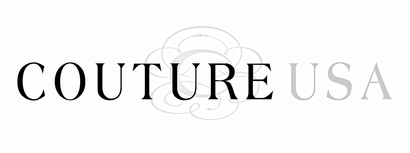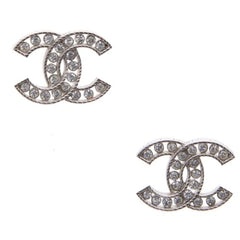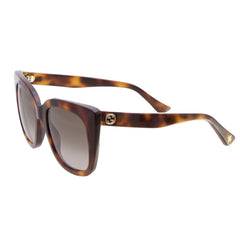Your Bag is Empty
Menu

A Beginners Guide to Diamond Grading
March 09, 2017 4 min read

From a favorite pair of earrings to that momentous engagement ring, chances are that you'll either purchase or own diamond jewelry in your lifetime. Everyone knows that diamonds are big investments, but most people don't know why they're so expensive. A diamond's price is based on its grading, or quality evaluation, in which an appraiser looks at the 4Cs. They are color, cut, clarity, and carat weight. The Gemological Institute of America created the 4C system, and evaluating each of the Cs is a process in itself. Before you financially commit to a stone, check out our beginners guide to diamond grading.
Diamond Color Grading
For standard white diamonds, a good color rating actually means the absence of color. The more colorless the diamond, the more transparent it is. More transparency means more brilliance or sparkle. Fancy colors (like pink or canary yellow) are exceptions to the standard color rating system. These colored stones can be a lot more pricey than standard white diamonds. In their natural states, diamonds are a cloudy white color, created by compression approximately 100 miles beneath the Earth's crust. It takes between 1 and 3 billion years for diamonds to form naturally, and they ascend to the surface through a series of subterranean shifts. Their transparent brilliance is revealed during the cutting process.
A diamond cut refers to a diamonds specific proportions. Cut affects how well a diamond interacts with light, and it's defined by three attributes: brightness, fire, and scintillation. Brightness refers to how much light passes through. Fire alludes to the colors of the rainbow that the diamond refracts. Scintillation is how much sparkle the stone has. Some diamond cuts are more popular than others, and it changes with trends. Currently, the three most popular cuts are round, princess, and emerald.
Clarity refers to inclusions, or imperfections, in a diamond. Think about it, diamonds are natural stones that grow under tons of pressure, so it's natural to develop internal imperfections. A flawless clarity rating means that there are no imperfections, which makes the diamond really rare and adds to its price tag. Clarity is rated on a scale of Flawless to Included. Flawless diamonds are the best possible rating, with no inclusions. Very Very Slightly Included (VVS), Very Slightly Included (VS), and Slightly Included (SI) diamonds might have visible imperfections, but the overall beauty of the stone isn't effected. The beauty and durability of Included (I) stones, however, can be moderately to severely affected.
Carat weight is the weight and size of a diamond. The bigger it is, the more rare and expensive it is, and diamond prices have larger jumps at each quarter carat interval (.25 carat, .50 carat, etc). Buying just below a full quarter carat can save a significant amount of money. For example, a .48 carat diamond may cost only slightly less than a .49 carat diamond, but a .49 carat diamond will cost a lot less than a .50 carat diamond. The chart below is a quick reference for the 4C diamond grading system and types of cuts.

Diamond Color Grading
For standard white diamonds, a good color rating actually means the absence of color. The more colorless the diamond, the more transparent it is. More transparency means more brilliance or sparkle. Fancy colors (like pink or canary yellow) are exceptions to the standard color rating system. These colored stones can be a lot more pricey than standard white diamonds. In their natural states, diamonds are a cloudy white color, created by compression approximately 100 miles beneath the Earth's crust. It takes between 1 and 3 billion years for diamonds to form naturally, and they ascend to the surface through a series of subterranean shifts. Their transparent brilliance is revealed during the cutting process.
Diamond Cut Grading
Which #diamond shape expresses your unique style? 💎
A post shared by GIA (@giagrams) on
A diamond cut refers to a diamonds specific proportions. Cut affects how well a diamond interacts with light, and it's defined by three attributes: brightness, fire, and scintillation. Brightness refers to how much light passes through. Fire alludes to the colors of the rainbow that the diamond refracts. Scintillation is how much sparkle the stone has. Some diamond cuts are more popular than others, and it changes with trends. Currently, the three most popular cuts are round, princess, and emerald.
Diamond Clarity Grading
Clarity refers to inclusions, or imperfections, in a diamond. Think about it, diamonds are natural stones that grow under tons of pressure, so it's natural to develop internal imperfections. A flawless clarity rating means that there are no imperfections, which makes the diamond really rare and adds to its price tag. Clarity is rated on a scale of Flawless to Included. Flawless diamonds are the best possible rating, with no inclusions. Very Very Slightly Included (VVS), Very Slightly Included (VS), and Slightly Included (SI) diamonds might have visible imperfections, but the overall beauty of the stone isn't effected. The beauty and durability of Included (I) stones, however, can be moderately to severely affected.
Diamond Carat Weight
Carat weight is the weight and size of a diamond. The bigger it is, the more rare and expensive it is, and diamond prices have larger jumps at each quarter carat interval (.25 carat, .50 carat, etc). Buying just below a full quarter carat can save a significant amount of money. For example, a .48 carat diamond may cost only slightly less than a .49 carat diamond, but a .49 carat diamond will cost a lot less than a .50 carat diamond. The chart below is a quick reference for the 4C diamond grading system and types of cuts.

Conflict-Free Diamonds
Conflict-free diamonds are those that are mined without any connection to child labor, violence, or exploitation. In the past decade, consumers have increasingly sought conflict-free diamonds from jewelry retailers. Conflict-free certifications vary, and one of the most popular is the Kimberly Process.Synthetic and Artificially Colored Diamonds
Synthetic and artificially colored diamonds are relatively new. Synthetic diamonds are lab-made, while artificially colored diamonds have colored coatings. Many people opt for synthetic stones as lower price point options, and in many cases an appraisal (or advanced scientific testing) is the only way to differentiate natural and synthetic stones. Our Lead Certified Gemologist recommends getting an appraisal from a GIA-trained (Gemological Institute of America) professional before purchasing a diamond. Do you have any questions about diamonds? Let us know, we'd be happy to help! Image Credits: Feature image: courtesy of TVZ Design via Flickr Diamond chart: By HenriSormus (Own work) [CC BY-SA 4.0 (http://creativecommons.org/licenses/by-sa/4.0)], via Wikimedia Commons Recent Articles
- All you need to know about Chanel Flap bags November 03, 2023
- Should we say Saint Laurent or Yves Saint Laurent? May 22, 2023
- Top Summer Travel Essentials July 14, 2022
- Gift Ideas Your Mom will Love April 29, 2022
- Walk a Mile in the Latest Shoe Trends April 20, 2022
Couture VIP
Sign up now for exclusive pre-sale alert before anyone else!
+30 OFF your first purchase of $300 or more
Cookie Policy
By continuing on this website, you consent to the use of cookies by CoutureUSA and our partners. Our goal is to offer you a more enjoyable shopping experience with personalized content and advertising. For more information, please read our Privacy Policy.
OK More Info

Welcome Back!
YOU HAVE THE FOLLOWING ITEMS WAITING IN YOUR CART!
BUY NOW BEFORE IT'S TOO LATE!
VIEW CART


































































































































